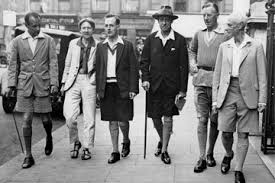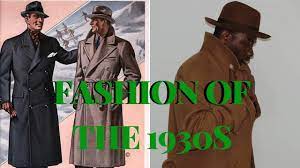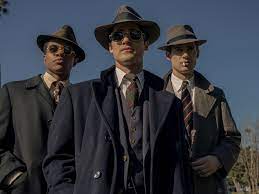Decoding the Timeless Elegance of 1920s Men’s Clothing
Exploring 1920s Men’s Clothing: A Glimpse into Vintage Style
The 1920s was a decade known for its iconic fashion trends, and men’s clothing of that era was no exception. From the dapper suits of the upper class to the more casual attire of the working man, 1920s men’s fashion reflected a time of change and innovation.
The Suit: A Staple of 1920s Men’s Fashion
One of the most recognisable elements of 1920s men’s clothing was the suit. Suits in this era were typically made from high-quality fabrics such as wool and featured wide-legged trousers, tailored jackets, and waistcoats. The silhouette was often boxy and structured, with an emphasis on broad shoulders and a slim waist.
Casual Attire: Dressing Down in the 1920s
For more casual occasions, men in the 1920s would opt for knitted sweaters, cardigans, and flat caps. These pieces were often made from comfortable materials like cotton or wool and were designed to be both stylish and practical.
Accessories: The Finishing Touches
To complete their look, men in the 1920s would often accessorise with items such as pocket squares, cufflinks, tie pins, and fedora hats. These accessories added a touch of sophistication to their outfits and helped to elevate their overall style.
The Influence of Hollywood
During the 1920s, Hollywood played a significant role in shaping men’s fashion trends. Actors like Charlie Chaplin and Rudolph Valentino became style icons, influencing how men dressed both on and off-screen. Their impeccable tailoring and attention to detail set the standard for elegance and refinement.
In Conclusion
Exploring 1920s men’s clothing offers a fascinating glimpse into vintage style that continues to inspire modern fashion trends. From tailored suits to casual knits, the fashion of this era embraced both tradition and innovation, creating a timeless aesthetic that still resonates today.
1920s Men’s Fashion: Common Questions and Style Tips
- What did men wear in the 1920s?
- How to dress for 1920s party men?
- What is 1920s style called?
- What men should wear in their 20s?
What did men wear in the 1920s?
During the 1920s, men’s fashion underwent a significant transformation, reflecting the spirit of the era marked by social change and innovation. Men in the 1920s typically wore tailored suits with wide-legged trousers, structured jackets, and waistcoats made from high-quality fabrics like wool. Casual attire included knitted sweaters, cardigans, and flat caps for a more relaxed look. Accessories such as pocket squares, cufflinks, tie pins, and fedora hats were popular finishing touches that added sophistication to their outfits. Hollywood actors like Charlie Chaplin and Rudolph Valentino further influenced men’s fashion trends, setting a standard of elegance and refinement that defined the style of the decade.
How to dress for 1920s party men?
When preparing to dress for a 1920s party as a man, it is essential to embrace the iconic fashion trends of the era. Opt for a classic tailored suit with wide-legged trousers, a structured jacket, and a waistcoat for a sophisticated look. Accessorise with items such as a fedora hat, pocket square, cufflinks, and tie pin to add a touch of elegance to your outfit. Consider incorporating elements of Hollywood glamour into your ensemble, taking cues from style icons of the time like Charlie Chaplin and Rudolph Valentino. By paying attention to detail and embracing the vintage aesthetic of the 1920s, you can create a timeless and stylish look that is sure to make a statement at any themed party.
What is 1920s style called?
The style of men’s clothing from the 1920s is often referred to as “1920s fashion” or “Roaring Twenties style.” This era was characterised by its distinctive sartorial choices, including tailored suits with wide-legged trousers, flat caps, knitted sweaters, and sophisticated accessories like pocket squares and fedora hats. The 1920s style exuded a sense of elegance, refinement, and innovation, reflecting the societal changes and cultural shifts of the time.
What men should wear in their 20s?
When it comes to men’s fashion in their 20s, the 1920s offer a wealth of inspiration. Young men in their 20s can take cues from the classic style of that era, incorporating elements such as tailored suits, knitted sweaters, and stylish accessories into their wardrobe. Embracing the timeless elegance of 1920s menswear can help men in their 20s exude confidence and sophistication while making a statement with their personal style. By paying homage to the fashion trends of the past, young men can create a look that is both modern and refined, setting the tone for a stylish decade ahead.



